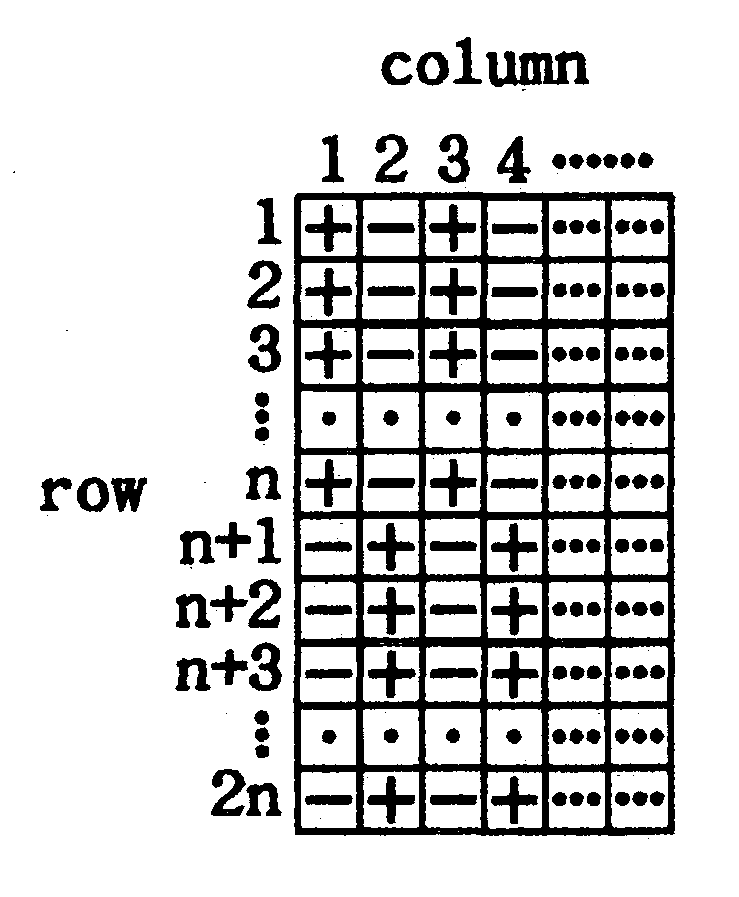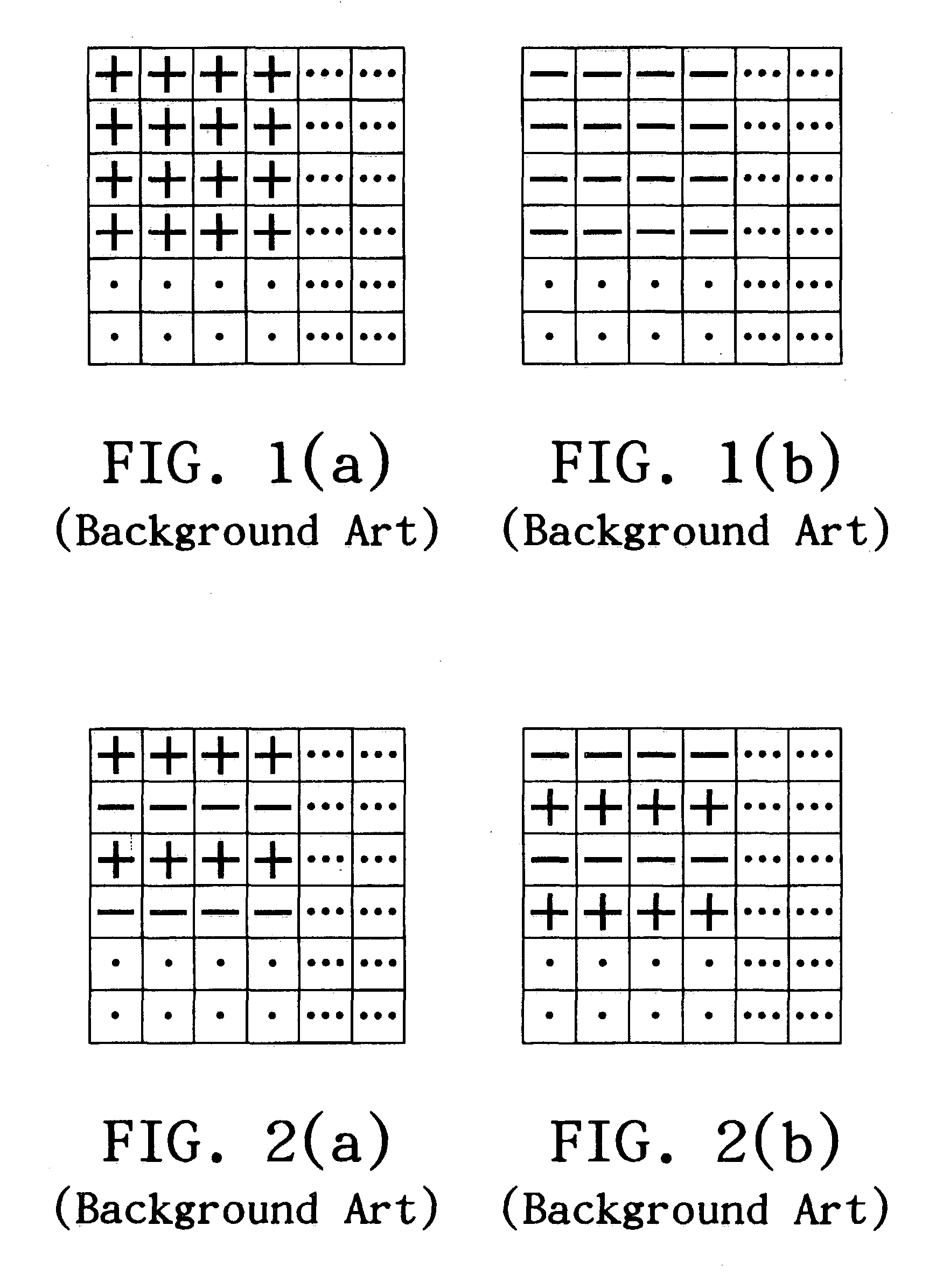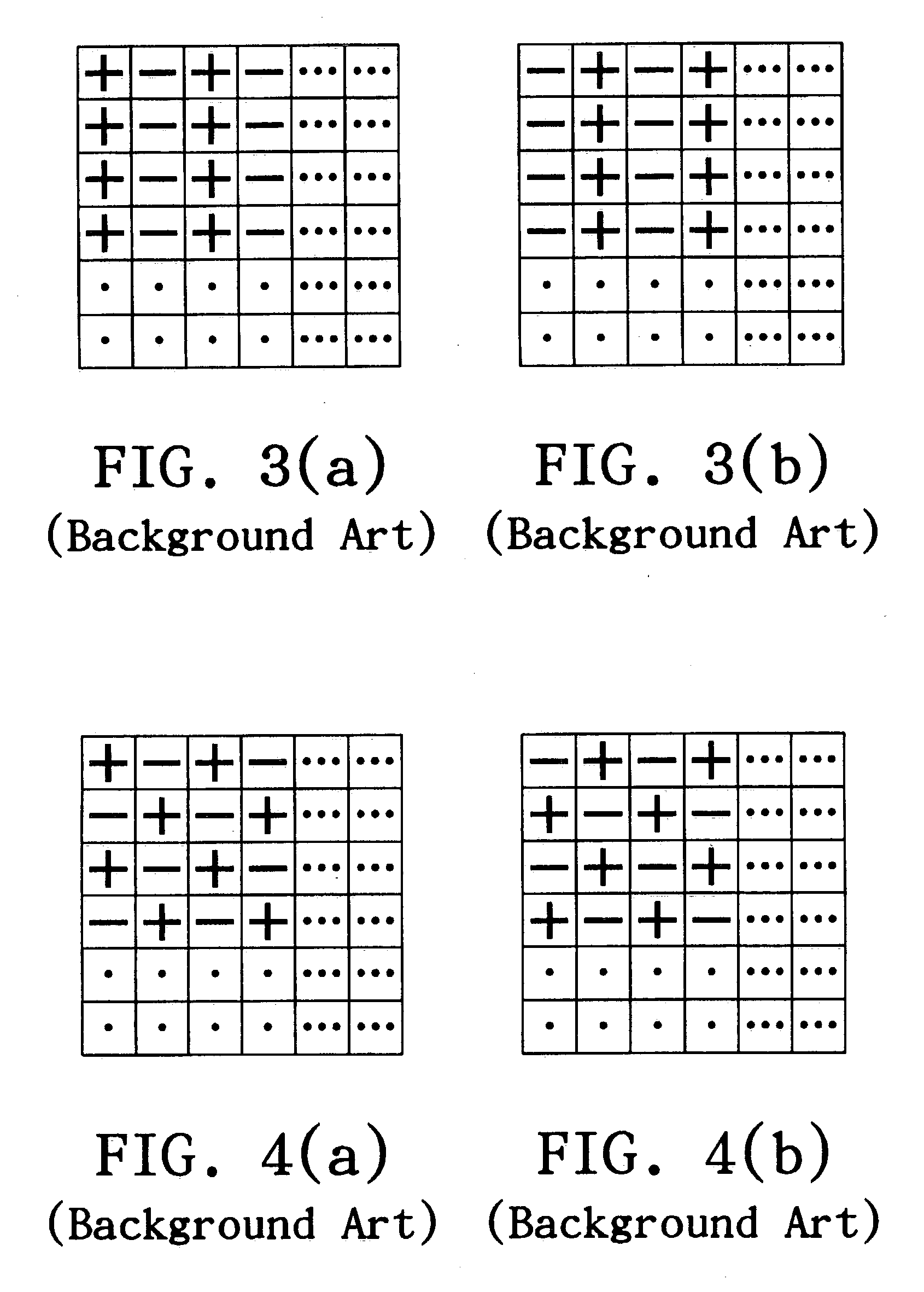Method for driving an liquid crystal display in a dynamic inversion manner
a liquid crystal display and dynamic inversion technology, applied in the direction of instruments, static indicating devices, etc., can solve the problems of flicker problems, power consumption dependent, flicker problem becoming worse, and both of them also have flicker problems
- Summary
- Abstract
- Description
- Claims
- Application Information
AI Technical Summary
Problems solved by technology
Method used
Image
Examples
Embodiment Construction
[0030] FIGS. 5(a)-5(e) are diagrams for explaining the generating procedure of polarity blocks in accordance with the present invention. First, a polarity frame is divided into a plurality of polarity blocks with the same area along the scanning lines, and each of the polarity blocks has the same even number of scanning lines. As shown in FIG. 5(a), the polarity block covers 2n pieces of scanning lines. For example, a XGA LCD panel fifteen inches in size has 768 scanning lines, wherein each scanning line is connected to 1,024 pixels. If n is equal to two, the XGA LCD panel is divided into 192 polarity blocks. Each polarity block covers four scanning lines. To simplify the driving circuit of an LCD panel, every polarity block in a polarity frame (or a polarity pattern) has the same polarity configuration. When n is equal to two, the driving method is called a 2-line mode dynamic inversion. If n is equal to three, the driving method is called a 3-line mode dynamic inversion. We explai...
PUM
 Login to View More
Login to View More Abstract
Description
Claims
Application Information
 Login to View More
Login to View More - R&D
- Intellectual Property
- Life Sciences
- Materials
- Tech Scout
- Unparalleled Data Quality
- Higher Quality Content
- 60% Fewer Hallucinations
Browse by: Latest US Patents, China's latest patents, Technical Efficacy Thesaurus, Application Domain, Technology Topic, Popular Technical Reports.
© 2025 PatSnap. All rights reserved.Legal|Privacy policy|Modern Slavery Act Transparency Statement|Sitemap|About US| Contact US: help@patsnap.com



